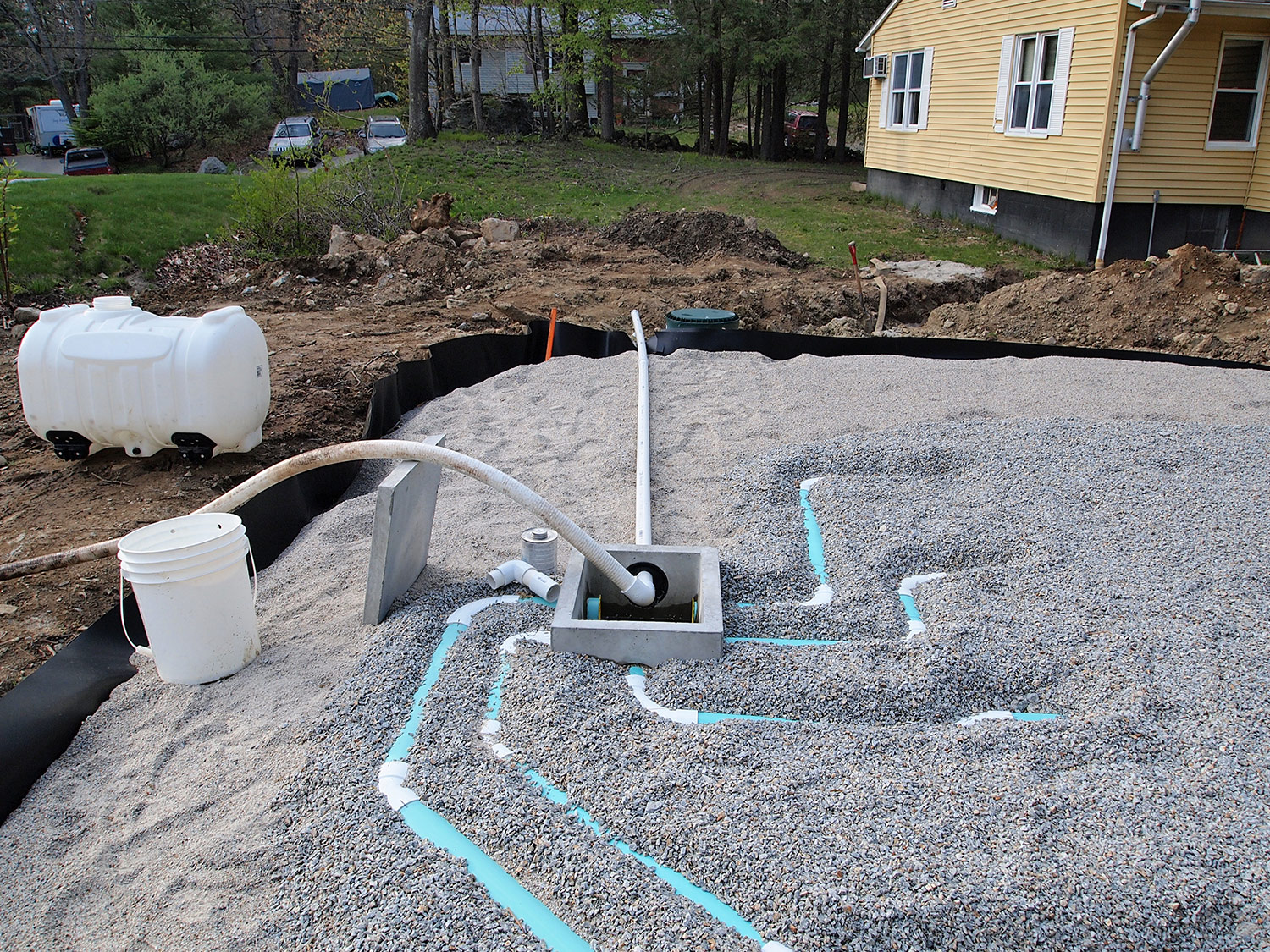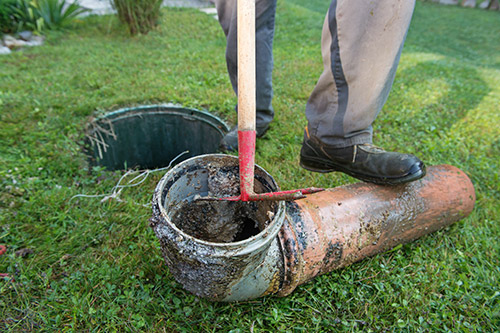
Septic designs vary from home to home depending on the size of the lot, soil type, slope of the ground, proximity to nearby bodies of water, climate, and more. This list describes nine types of septic tanks and designs, each with different advantages and uses. Learn more about each before hiring a septic tank company to find the best system for your needs.
1. Septic Tank
If you already have a septic system on your property, you might only have to deal with replacing a septic tank rather than installing a new system. Luckily, this is a job that happens only once every couple of decades, assuming the original septic tank was of high-quality construction and was pumped as needed every three to five years.
While you might be able to make do with other home appliances or systems that are on their proverbial last legs, you can’t go for very long with septic tank that needs replacing. And while no one likes to get hit with an unexpected bill for a replacement appliance, a new septic tank is arguably at the better end of the bargain when one considers what could go wrong in the event of an entire septic system failure.
The cost of a new septic tank will vary depending on the size of the tank, which is determined by your household’s waste needs. A 500-gallon tank, for example, costs between $500 and $900 and is ample for the needs of a one-bedroom home. However, it will cost $900 to $1,500 for a three- to four-bedroom home, and upwards of $1,500 for a six-bedroom home or larger.
2. Conventional Anaerobic Septic System
A conventional home septic system starts with an underground watertight septic tank. Waste flows from the home into the tank, where heavy solids settle on the bottom and oils float to the top. Liquid waste, or effluent, is then pushed into a system of distribution pipes that branch out and slowly release wastewater into an area of land called a drain field.
Drain fields are deep, underground trenches lined with gravel and strong geofabric. Along with natural microbes, these layers filter out contaminants to protect the environment. Because conventional systems are the most common type of septic system for single-family homes, they are relatively easy to repair when needed.
3. Chamber System
Chamber septic systems are a common alternative to conventional gravel systems in places with a high groundwater table. Instead of using gravel drain fields, these systems consist of a series of connected open-bottomed leaching chambers surrounded by soil. Microbes in the soil around the chambers treat a home’s wastewater before it’s released and travels toward the groundwater.
These systems can be built more easily than conventional systems and sometimes consist of recycled materials, but the added chambers may require extra maintenance.
4. Drip Distribution System
Drip distribution septic systems use a buried network of small tubing to disperse effluent over a large drain field. After the septic tank is a large dose tank that collects wastewater and releases it slowly as the tubes in the drain field empty. This timed release helps avoid overflowing the drain field.
The large dosing tank may require additional maintenance and electrical power to run, making drip distribution more expensive than conventional systems. The small pipes also require filters to prevent large debris from clogging the system. However, the piping is buried in shallow soil and can be convenient to access if needed.
5. Aerobic Treatment Unit
Aerobic treatment units (ATUs) are like small-scale municipal sewage plants. They inject oxygen into the septic tank to increase natural bacterial activity, adding nutrients to the wastewater for treatment. Some aerobic systems also have pretreatment and final treatment tanks to disinfect the water before dispersing it into the environment.
ATUs work in homes with smaller lots, inadequate soil conditions, high water tables, or nearby bodies of water that are sensitive to contamination.
6. Mound System
Mound septic systems get their name from a large, raised mound built to contain the drain field. Effluent from the septic tank transfers to a pump chamber that pumps it into a mound of gravel and sand at timed intervals. The effluent filters through the sand and eventually disperses into the soil.
Mound systems are popular in rural areas with plenty of land to build on, but the soil is too shallow for normal dispersal.
7. Recirculating Sand Filter System
Sand filter systems work above or below ground. Effluent flows from the septic tank to a pump chamber, which pumps it onto the top of a sand filter. The filter is a sand-filled box lined with PVC or concrete. Effluent is filtered as it flows down through the sand and then discharged to a drain field.
Like a mound system, they are good for sites with shallow soil, high water tables, or a nearby body of water. They also require frequent maintenance and are relatively expensive to build at $7,000 to $18,000. However, they can function with much more limited space.
8. Evapotranspiration System
The drain field for an evapotranspiration system is unique among the different types of septic systems. It features an open-air tank lined with a waterproof material that prevents effluent from ever filtering into the soil or reaching groundwater. Instead, wastewater slowly evaporates into the air.
These systems are only useful under very specific conditions. They require a warm, dry climate and plenty of sunlight. Too much rain, snow, or humidity could cause the system to fail. However, installation and maintenance are easy compared to other types of septic tanks. Evapotranspiration septic systems cost $10,000 to $15,000.
9. Constructed Wetland System
Another unique septic system, a constructed wetland recreates the water treatment processes in natural wetlands. Wastewater flows from the septic tank into a wetland cell made of a watertight liner, gravel, sand, and aquatic plants that thrive in a perpetually saturated environment.
The plants and microbes in the wetland cell break down the wastewater, removing pathogens and nutrients before it flows into a drain field.
10. Cluster or Community System
Cluster systems can be built in small neighborhood communities to collect wastewater from two or more homes or businesses.
Each building has its own septic tank for initial treatment before wastewater flows into a nearby common drain field, drip distribution system, or constructed wetland system shared between the community. These systems are most common in rural subdivisions.
If a septic system is the best option for your home, be sure to follow a septic system installation checklist, starting with hiring a septic tank pro.
Contact Morse Engineering and Construction for more information.
Source: angi.com



